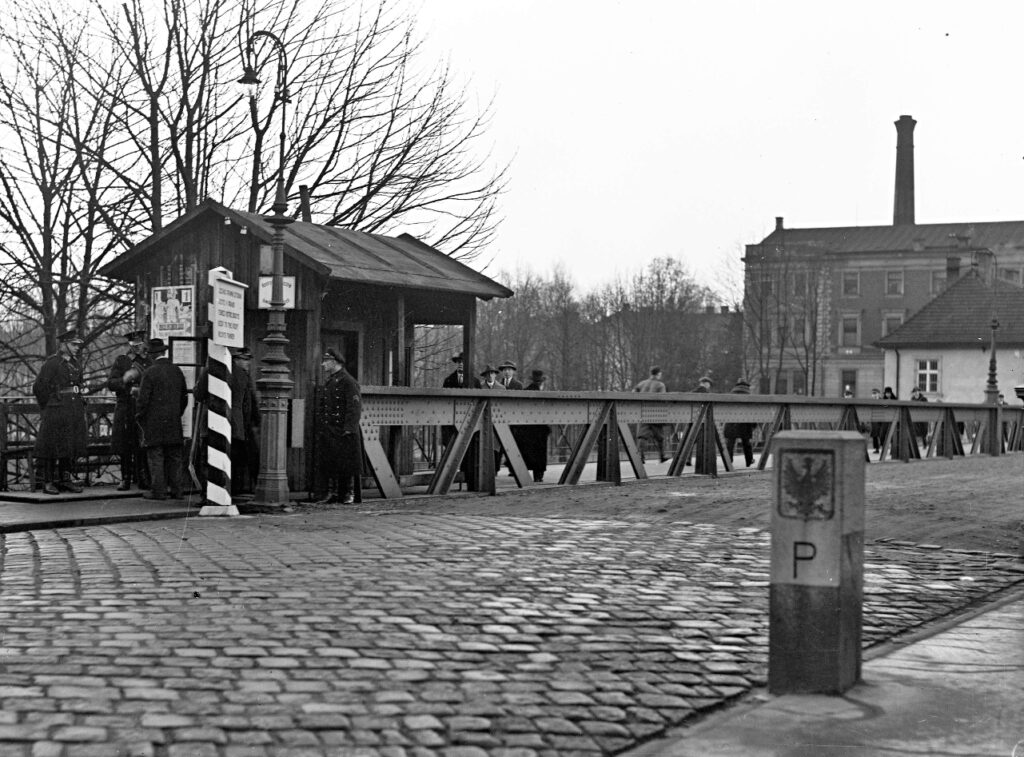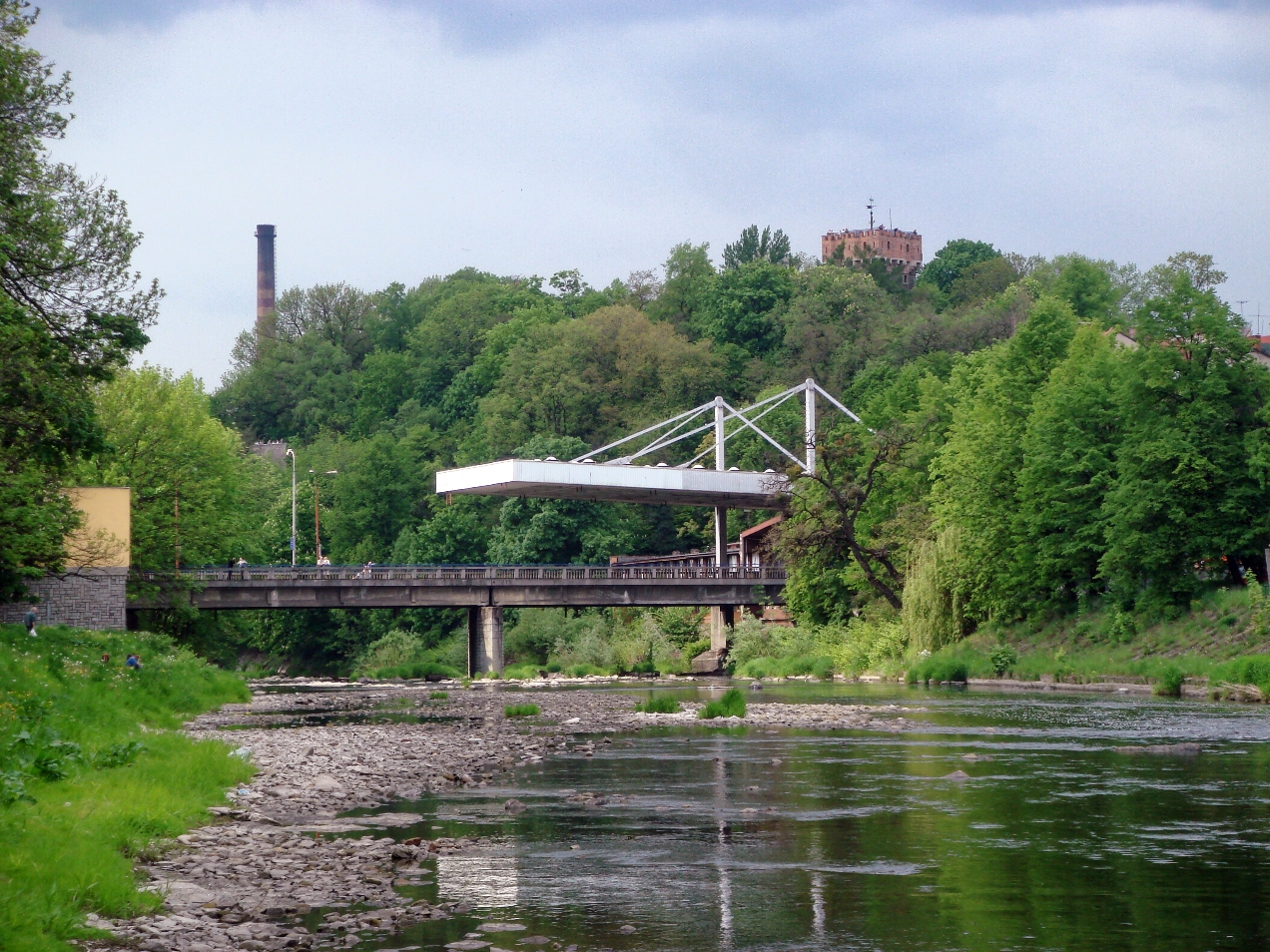Czech–Polish Coexistence in the Těšín Region – Český Těšín
Fact of the Czech figure „The difficult search for multiethnic coexistence”
Part of the „The emancipation of minorities” topic
The Friendship Bridge over the Olše (Olza) River situated on the border between the Czech Republic and Poland divides the former Silesian duchy between the Polish town of Cieszyn and the Czech town of Český Těšín. The bridge symbolically embodies the complex path toward coexistence between the Czech and Polish nations. The Těšín region became a location of territorial and ethnic disputes during the 20th century.
After World War I, Těšín was contested by both Czechoslovakia and Poland. The Czechoslovak claim was based primarily on historical rights, as the Těšín duchy had been part of the Crown of Bohemia since the Middle Ages, while Poland’s claim was based on national rights, since a large portion of the population was Polish. The national situation in the region, however, was ambiguous, with Poles, Czechs, Germans, Jews, and a significant number of residents identifying with a unique Silesian regional identity, which was neither Polish nor Czech. The situation was further complicated by Těšín’s wealth in coal and industry and its strategic importance as a railway hub. In January 1919, tensions escalated into the „Seven-Day War” between Czechoslovakia and Poland, which ended only after the intervention of the Entente powers.
The result was a compromise in July 1920, which divided the regional centrum Těšín (Cieszyn) between Czechoslovakia, gaining the larger, more populous, and industrially rich portion of the region, and Poland, which retained the historic city of Cieszyn. The compromise was particularly unsatisfactory for the Polish side. During the Czechoslovak crisis in the autumn of 1938, when Nazi Germany demanded the Sudetenland, Poland once again asserted its claim to the whole region of Těšín. Following the Munich Agreement, Czechoslovakia ceded the territory to Poland under pressure.
After World War II, the Czechoslovak-Polish border was restored to its prewar position, and the Těšín dispute was definitively resolved by an interstate treaty in 1958. Today, the Czech side of the region is home to a recognized Polish minority of about 30,000, which freely develops its cultural activities, and its youth attend Polish-language schools. The Friendship Bridge over the Olše River now symbolizes not division, but the effort made into peaceful coexistence of both nations.






